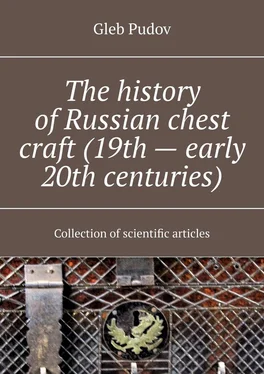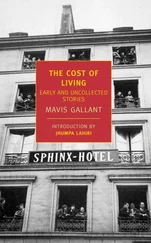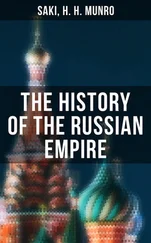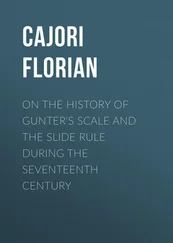Parallels can be traced already at the level of the etymology of words denoting certain chest products, as well as objects associated with them. For example, the Old Russian word «korsta» – «coffin», which has been preserved in some northern dialects, is close not only to the Germanic «kasten» («box»), which goes back to the Latin word «cista» («box») 13 13 Сапунов Б. В. У истоков русской мебели (XI—XIII вв.) // Труды ГЭ. Том XXIII. Из истории русской культуры. – Л.: Искусство, 1983, С.14.
, but also the swedish word «kista» («chest»). The Russian word «chest» comes from the ancient Swedish «lárr» («chest», «drawer») and «lår» («box, chest») 14 14 Фасмер М. Этимологический словарь русского языка. Т. II. – М.: Прогресс, 1967, С. 460.
. According to other sources, the ancient swedish word itself could be borrowed from the Old Russian 15 15 Черных П. Я. Историко-этимологический словарь современного русского языка. В 2 т. Т. I. – М.: Русский язык, 1994, С. 468.
. One way or another, the etymology of the word «chest» testifies to the existence from an early period of Russian-Swedish ties in the use of chest products, and possibly their production.
In June 2004, in Pskov, in one of the burials of the Viking Age, the remains of a wooden casket were discovered, which dates back to the 10th century 16 16 Михайлов А. В., Салмин С. А. Ларец из камерного погребения 2 Старовознесенского раскопа в Пскове// Славяно-русское ювелирное дело и его истоки. Материалы Международной научной конференции, посвященной 100-летию со дня рождения Г. Ф. Корзухиной. Санкт-Петербург, 10—16 апреля 2006 г. – СПб.: Нестор-История, 2010, С. 493—496.
. On its round lid, between four triangular iron plates, there were bronze plates decorated in the Jelling style 17 17 The Jelling style (900 – 980) is named after burial mounds in Jelling (Denmark). Items made in this style are distinguished by sophistication, aristocracy and richness. They are often decorated with gilding. The main features of this style are the image of the head of the beast in profile, ribbon-like, intertwining torsos and geometric patterns run along the body of the animal.
. An iron ring with a diameter of 4.5 cm is attached in the middle of the lid. The lid is bordered by a rim of nails with wide heads. The lock was placed in the wall of the casket. Its analogue were found in Birka 18 18 Birka is a large economic and handicraft center on the territory of modern Sweden, situated on the shores of Lake Mälaren. It existed in the years 800 – 975.
.The considered casket testifies to one of the ways of getting Scandinavian products to Russia and their existence here since ancient times. This provided an opportunity for direct interaction between Russian and Scandinavian traditions in the production of chest and caskets. Let us consider several of their types 19 19 Most illustrative works of art have been selected for the article. Conclusions following from their comparison concern the entire mass of Russian and foreign items viewed by the author.
.
In museums of Russia there are items, which are called trunks (“baul” in Russian). They were taken along on trips. The trunks are of different sizes. Their body is cylindrical, the lid is on top, on the sides there are small curly handles. As a rule, such items were covered with the skins of sea animals, upholstered with slotted iron strips. In front there was a curly iron plate that protected the key hole. The collection of the Department of folk art of the Russian Museum contains a similar item dating from the 18th century 20 20 Inv. № М-504. See analogies: “Museum Complex named after I. Ya. Slovtsov” (Tyumen region, inv. № D-57), Smolensk State Museum Reserve (inv. №P 187), State Historical Museum (inv. №MZh 6849), Hermitage (inv. №ERM-4731). Dated to the end of the 18th – beginning of the 19th century.
. Five iron strips with a cut ornamentation consisting of a row of “cucumbers” 21 21 “Cucumber” – the name of a decorative figure.
are attached on its oak base, in front there is a cast hinge.
Many similar items made in Sweden and called chests («kista») can be found in museums in different cities of this country, for example, in Kalmar 22 22 See also the chest from the collection of the Uppland Museum (inv. № UM 03648).
. As an example, we give a product at the inventory number KLM 21466 23 23 See: https://digitalmuseum.se/021026252015/kista.
. It has a cylindrical shape and is covered with seal skin. Thin iron strips are nailed on top, wide at the edges. There is no slit ornament on them. In the middle there is a square metal plate. There is no lock. This chest has wrought iron handle on each side. The inside of the chest is upholstered with unpainted linen. Similar things were done in Denmark 24 24 Item from the collection of the National Museum of Denmark, dated 1744 (see: samlinger.natmus.dk/DMR/asset/219632).
.
Together with the complete similarity of the designs of Russian and Scandinavian items, there are obvious differences in decoration. The slotted ornament of Russian chests consists of ornamental figures borrowed from oriental fabrics that came to Russia in abundance in the 17th century. There is no cut ornament on swedish items (with the exception of a few dates included in the strips; these can be considered as a kind of decoration). The ornamentation is focused on wide strips that are placed along the edges of the items: they are given a wave-like shape 25 25 See: Пудов Г. А. Об одном виде русских сундучных изделий (баулы XVIII – XIX веков). История и художественный стиль// Известия Байкальского государственного университета. – 2020. – Т. 30. – №4. – С. 560—565.
.
Another striking example is the so-called “podgolovnik”. There is a “podgolovnik” in the collection of Department of folk art 26 26 Inv. № М-4.
, manufactured in 1750. This item is of considerable size (34x55x42), the outer surfaces of which are upholstered with leather and smooth iron strips, located “in a cage”. Inside each “cell” there are slotted rosettes with mica lining. In the corners of the lid and the top wall there are slotted strips in the form of triangles. On the face of the lock, in a zigzag frame, the inscription is engraved: “1750 September 23rd day of srk ivan chyupyatov”. There are forged handles on the side walls. Inside “podgolovnik” there are twelve compartments, eight of which are with drawers. The podgolovnik, probably of Kholmogory origin, is notable for its durability, solidity and reliability. The symmetry of the ornament, its clarity, “calculated” contribute to this impression. The main thing for the master was the direct purpose of the product as a repository of valuable things and documents. The general artistic solution of the podgolovnik is characterized by masculine roughness, severity, against the background of which all the ornamental delights look like optional additions.
Norwegian «podgolovnik» 27 27 Stiftelsen Nordmøre Museum (инв. № KM.02036). This example is not isolated. See, for example, «podgolovnik» from the Hordalan Museum center, inv. № ОМ. 01317.
dates back to 1751. It has a similar design, but slightly different proportions (actually another wall serves as its base). The lid rises with iron curly hinges, on the sides there are simple cast handles. The chest has several shelves from the inside (not preserved). The surfaces of the product (except for the back and side ones) are divided into rectangular segments, in each of which there is a picturesque composition consisting of images of bouquets framed blue. They are painted in the fast, improvised manner of Norwegian wood painting. The rest of the surfaces are painted red. On the edges of the lid there are inscriptions in white paint: «Ek Ols Domis (?) Ann 1751». Perhaps this item served as a travel chest for some official.
Читать дальше












